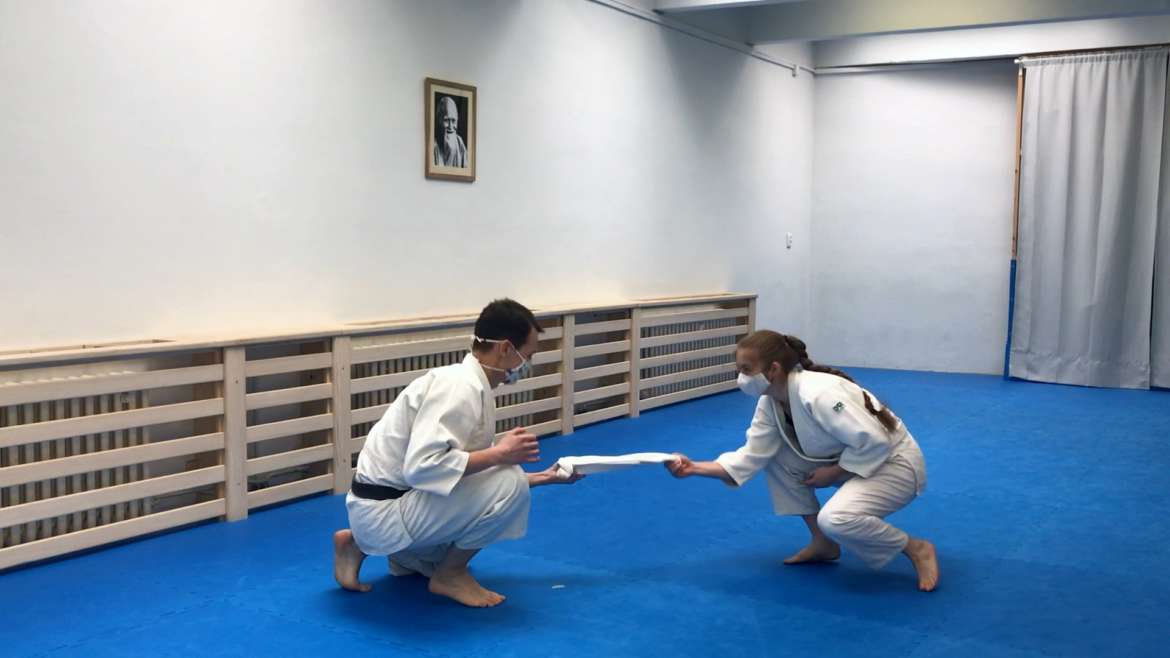Partner games and exercises (not only) for children: 5 videos
We use the following five playful exercises to train children aged 8–12. They are also suitable for training at home. We have chosen a variety of movements which develop strength, speed and coordination, and are usually suitable for partners of different sizes and strengths. Some of them are purely cooperative exercises, while some are very competitive. You can find more ideas for games and exercises for children (and adults) in our videos here:
- 6 videos: exercises for parents and children during quarantine (home physical education part 1) – children 5–10
- 4 videos: exercises for parents and children during quarantine (home physical education part 2) – children 5–10
- Basic animals exercises: 7 locomotion videos – for children and adults
- and of course at our courses for childreni:-).
TEDDY BEAR – PARTNER EXERCISE FOR FALLS
You may know the “teddy bear” as a basic exercise for falls, but it is much more fun with two! This video contains two variations, individual and in pairs. Tips: Round your back and try to move effortlessly so that your buttocks and legs, which rise into the air when you fall, will want to sit back on the ground on their own.
Tug-of-War
This variation of tug-of-war is not for training strength, but speed. Actual tugging almost never happens. Tips: If you have enough space, try to vary your distance from the belt. As a starting signal, you can use a third person or a timer.
BALANCING AND Squats
These two exercises focus on perceiving not only your own weight and movement, but also your partner’s – so you can do them successfully regardless of age. The greater your disparity in height and weight, the harder the exercises will be, but it can also be done by an adult with a ten-year-old child (tested by our teachers).
- The balancing in the first part of the video usually involves a forearm-to-forearm grip, but if this is difficult for you (or one of you has a stronger forearm), try using a belt like we do in the video. Tips: Try to relax your arm as much as possible and feel as if you are sitting down. If you can, try other movements with your partner!
- Squat back-to-back. Tip: Stand relatively far apart, start with your buttocks at the same height and lean into your partner’s back.
JUmping over feet
This is another speed exercise based on reflexes (and someone who can handle coordinated jumping), but this time no one wins: the sitting partner just changes the speed and rhythm so that the exercise is challenging enough for the jumper. Tips: It is really not about winning; the sitting partner should stay on top. Be careful at first! We recommend a flat surface and bare feet.
ANIMAL WHEELBARROW
This paired exercise will test your dexterity and strength (mainly your core): it can be challenging regardless of age. Tips: First, the animal should practice walking to the side by itself. The exercise is comparable to or easier than a classic wheelbarrow, but the crab / dog is demanding in terms of strength and coordination. The partners can also be unevenly matched (eg child / adult), if you choose the right roles 🙂
Enjoy yourselves!
Napsal: Adam Nohejl







